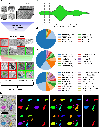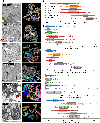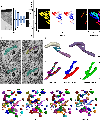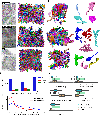Instance segmentation of mitochondria in electron microscopy images with a generalist deep learning model trained on a diverse dataset
- PMID: 36657391
- PMCID: PMC9883049
- DOI: 10.1016/j.cels.2022.12.006
Instance segmentation of mitochondria in electron microscopy images with a generalist deep learning model trained on a diverse dataset
Abstract
Mitochondria are extremely pleomorphic organelles. Automatically annotating each one accurately and precisely in any 2D or volume electron microscopy (EM) image is an unsolved computational challenge. Current deep learning-based approaches train models on images that provide limited cellular contexts, precluding generality. To address this, we amassed a highly heterogeneous ∼1.5 × 106 image 2D unlabeled cellular EM dataset and segmented ∼135,000 mitochondrial instances therein. MitoNet, a model trained on these resources, performs well on challenging benchmarks and on previously unseen volume EM datasets containing tens of thousands of mitochondria. We release a Python package and napari plugin, empanada, to rapidly run inference, visualize, and proofread instance segmentations. A record of this paper's transparent peer review process is included in the supplemental information.
Keywords: benchmark; crowdsourcing; deep learning; electron microscopy; image dataset; mitochondria; panoptic; segmentation; volume EM; volume electron miscroscopy.
Copyright © 2022 Elsevier Inc. All rights reserved.
Conflict of interest statement
Declaration of interests The authors declare no competing interests.
Figures





References
-
- Yin W, Brittain D, Borseth J, Scott ME, Williams D, Perkins J, Own CS, Murfitt M, Torres RM, Kapner D, et al. (2020). A petascale automated imaging pipeline for mapping neuronal circuits with high-throughput transmission electron microscopy. Nat. Commun. 2020 111 11, 1–12. 10.1038/s41467-020-18659-3. - DOI - PMC - PubMed
Publication types
MeSH terms
Grants and funding
LinkOut - more resources
Full Text Sources

